Nerve recovery therapy sessions typically run 30-45 minutes per session, with your schedule varying from 1-3 times weekly based on injury severity. You'll progress through four key phases over several months to years, starting with gentle therapy in weeks 0-12, then advancing to more intensive rehabilitation. Initial treatments focus on pain management and protecting the repair site, while later phases emphasize strength building and coordination. Most patients need consistent therapy for at least 3-12 months, though complete recovery can take longer. Your specific healing timeline depends on factors like age, injury type, and treatment timing – factors that influence your personalized recovery journey.
The Science Behind Nerve Recovery
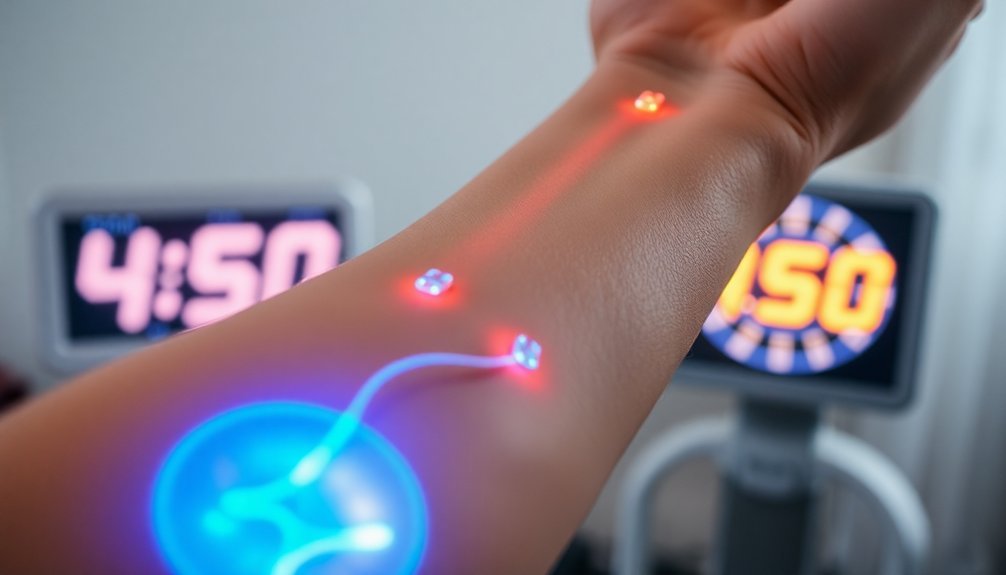
The body's nerve recovery process represents one of nature's most remarkable repair mechanisms. When you experience nerve damage, your peripheral nervous system (PNS) immediately begins a complex healing process that's quite different from what occurs in your central nervous system (CNS). The brain rapidly adapts to nerve injuries through neural reorganization processes.
Your damaged nerves undergo a process called Wallerian degeneration in the distal segment, while the proximal segment either dies or starts a chromatolytic reaction.
During recovery, specialized cells called Schwann cells become your allies by secreting essential chemicals and creating an environment that supports nerve regrowth. Your axons can regenerate at rates of up to 2mm per day in small nerves and 5mm in larger ones.
You'll find that growth cones at the tips of regenerating axons serve as vital indicators of healing progress. These structures respond to various therapeutic interventions, including electrical stimulation and neurotrophic factors.
Your nerve recovery can be enhanced through vagus nerve stimulation (VNS), which helps refine connectivity restoration and reduces incorrect nerve connections. Additionally, the presence of vascular endothelial growth factor (VEGF) promotes both blood vessel formation and nerve regeneration, substantially improving your recovery outcomes.
Treatment Schedules For Best Results
Understanding the biological mechanisms behind nerve recovery helps establish ideal treatment schedules for your healing journey. You'll need to commit to a structured treatment plan that typically spans several months to years, depending on your injury's severity.
The first 2-3 months are vital, as this acute healing phase responds best to conservative treatments. Common symptoms like sharp pain and tingling will typically begin to improve during this period.
During your initial therapy sessions, you'll undergo thorough assessments and movement screens to create your customized treatment plan. Your therapist will implement manual therapy techniques and therapeutic exercises, adjusting them based on your progress.
If you're considering surgery, it's typically scheduled between 2-6 months post-injury for the best results.
You'll need to maintain regular check-ups with your healthcare team to monitor your recovery progress. Your treatment schedule will include physical therapy sessions, nerve gliding exercises, and possibly splinting or medication management.
You'll also receive home exercise programs to perform between sessions. To maximize your recovery, you'll need to follow lifestyle modifications and avoid activities that could impede healing.
Your therapist will continuously educate you about your condition and adjust your treatment schedule based on your response to therapy.
Initial Assessment Timeline
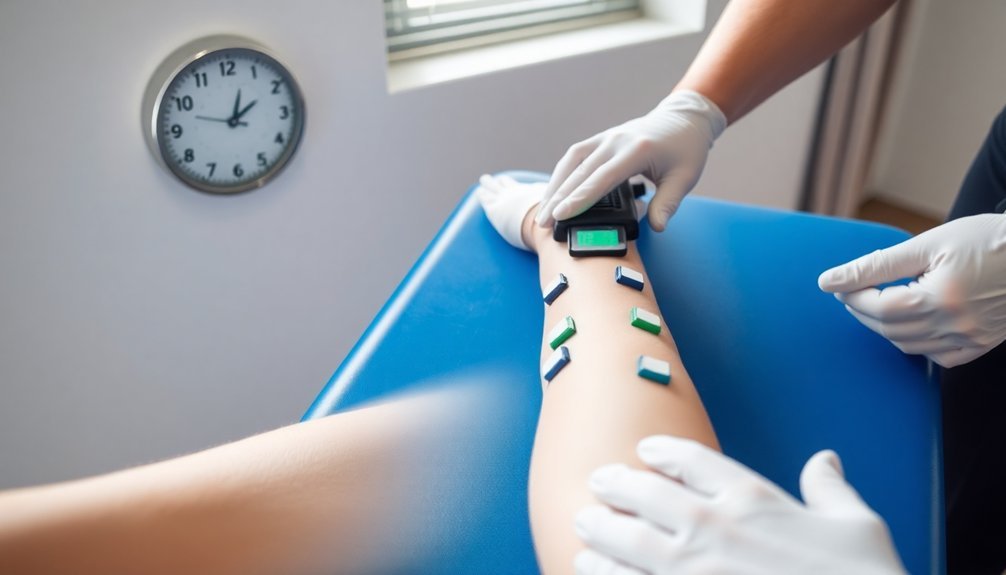
Prompt nerve injury assessment plays a significant role in your recovery journey. You'll need an immediate evaluation to determine whether you have an open, closed, or gunshot wound injury, as this affects your treatment timeline. Open nerve injuries require urgent exploration, while gunshot wounds are typically managed like closed injuries with ongoing monitoring.
You'll undergo detailed neurological testing, including specific maneuvers like Spurling's sign and Tinel's sign, to diagnose your nerve injury accurately.
Your healthcare provider will track nerve regeneration, which occurs at roughly 1 inch per month. For motor nerves, you'll need reinnervation within one year to maintain muscle function, though sensory nerves can recover even after several years. Schwann cells support nerve regeneration by releasing important growth factors.
Your rehabilitation will progress through distinct stages, starting with protection and prevention. You'll begin with gravity-assisted exercises, advancing to independent muscle activation as you improve.
Monthly follow-ups will help track your progress until you've achieved recovery or need additional intervention.
Regular Session Duration Guidelines
Your nerve recovery therapy sessions will typically run for one hour, occurring 2-3 times per week with rest periods between sessions to allow for proper healing and adaptation.
You'll need to track your weekly progress through regular checkpoints with your therapist, who can adjust your treatment phases based on your healing response.
Each treatment phase may last several weeks to months, depending on factors like your injury's severity and location, with motor nerve injuries requiring more urgent attention within the first 12-18 months.
Time Per Treatment Phase
Following precise treatment durations for nerve recovery is essential to achieve the best possible healing outcomes. You'll notice distinct timeframes for each phase of your recovery journey, with each requiring specific therapeutic approaches.
During Phase 1, which typically lasts several weeks, you'll need frequent but gentle therapy sessions focused on pain management and swelling reduction. You should participate in heat therapy sessions while avoiding excessive movement.
In Phase 2, spanning several months to a year, you'll require careful monitoring as your nerves regenerate, with therapy sessions primarily focusing on observation rather than active treatment.
Phase 3 marks a shift to more intensive therapy, where you'll engage in regular strength-building and coordination exercises. These sessions become more frequent and structured, lasting several months to years depending on your injury severity.
During Phase 3, the focus is on rebuilding motor control through therapy, which is crucial for regaining strength, sensation, and coordination. This stage can take time, but gradual improvements in these areas indicate ongoing recovery.
Phase 4, which extends beyond a year, involves maintaining consistent therapy sessions to preserve your progress and continue strengthening affected areas. Your healthcare provider will adjust session frequency based on your recovery progress and adherence to the Birmingham Protocol or similar rehabilitation frameworks.
In each phase, it is important to avoid aggravating the injury, follow a specific sequence of therapeutic exercises, and ensure the intensity of the therapy challenges the patient without causing further harm. The whole body, not just the injured area, should be the focus of the rehabilitation program to maintain overall physical and psychological well-being.
Weekly Progress Checkpoints
Consistently monitoring weekly progress through structured therapy sessions forms the backbone of successful nerve recovery.
Your therapist will establish two vital checkpoints to assess your treatment's effectiveness. During Checkpoint 1, which occurs after your first three visits, you'll undergo a diagnostic trial to measure objective improvements.
By your sixth visit, Checkpoint 2 will require repeat testing to confirm continued progress.
You'll attend therapy sessions 2-3 times per week, with each session lasting about an hour. Your progress will determine if these frequencies need adjustment. Since nerve regeneration occurs at roughly 1mm per day, your recovery timeline requires patience and dedication.
Your therapist will track your response to treatments, including electrical stimulation therapies like BES, which can help speed up nerve regrowth.
Based on your checkpoint results, your treatment plan may be modified or discontinued. Understanding that you'll need to perform prescribed stretches and exercises independently between sessions is vital.
Your commitment to the home rehabilitation program plays a key role in achieving the best results, as nerve recovery can extend from several weeks to multiple months.
Length Between Rest Periods
During regular nerve recovery sessions, rest periods should be structured to optimize therapeutic benefits while preventing fatigue. You'll need to space your therapy sessions appropriately, typically ranging from one to three times per week, depending on your injury's severity and recovery progress.
When you're participating in 30-45 minute workout sessions, it's vital to include brief rest intervals between exercises. Your treatment program should follow a pattern of warm-up exercises, followed by rehabilitation activities, with progress assessments concluding each session.
If you're dealing with more severe injuries, you'll likely need more frequent sessions with adequate rest periods between them.
Remember that nerve tissue heals at approximately 1 mm per day, so you'll need to allow sufficient recovery time between sessions. Your healthcare provider will adjust your rest periods based on your response to therapy, treatment goals, and overall condition.
If you're performing home exercises, you should space them 2-3 times per week, ensuring you're not overworking the affected area. Always follow your therapist's guidance on rest intervals, as proper recovery time is critical for successful nerve rehabilitation.
Recovery Phases And Timeframes
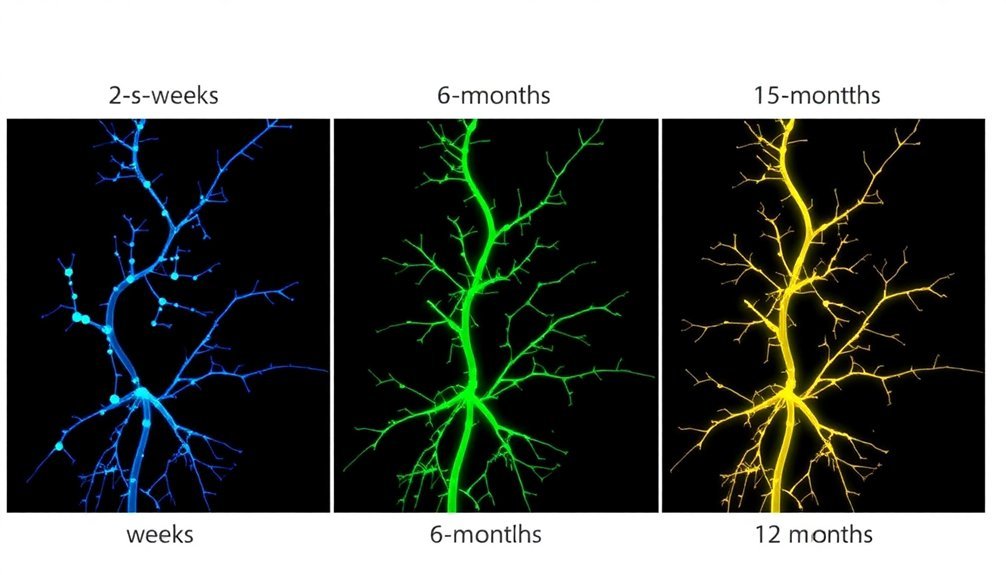
The journey of nerve recovery unfolds across several distinct phases, each with its own timeframes and therapeutic goals. You'll begin with pre-operative preparation, where you'll learn about your surgery and set functional goals. This foundation is essential for your rehabilitation success.
The protection phase spans your first 12 weeks post-surgery, focusing on safeguarding the nerve repair site while maintaining muscle and joint mobility through passive movements.
During months 3-12, you'll enter the power and plasticity phases, where you'll work on strengthening your recipient muscle and achieving independent activation.
Key phases of nerve recovery therapy:
- Pre-operative to immediate post-op: Focus on education and preparation
- Protection phase (0-12 weeks): Emphasis on nerve repair protection
- Power phase (3-12 months): Development of muscle strength
- Purpose phase (12+ months): Integration of functional activities
After the first year, you'll move into the purpose phase, where you'll focus on functional use of your reinnervated muscle in daily activities. This long-term recovery phase continues beyond 12 months, aiming for maximal recovery and practical application of your restored nerve function.
Optimal Light Exposure Windows
You'll find morning light therapy sessions particularly effective due to their alignment with your natural circadian rhythm, as exposure between 7:30 AM and 9 AM helps enhance your body's melatonin production cycle.
For nerve recovery, you can maximize therapeutic benefits by targeting treatments during this window, when your body's cellular response to photobiomodulation is heightened.
While evening sessions aren't as ideal for circadian entrainment, you can still benefit from controlled NIR light exposure within the 600-1,200 nm range for specific nerve healing purposes, provided you maintain appropriate duration and intensity levels.
Morning Treatment Sessions
While scientific research hasn't established direct links between morning light exposure and nerve recovery outcomes, treatment sessions can be scheduled flexibly throughout the day based on individual needs and clinical availability.
Your nerve recovery therapy plan will typically span 4-6 weeks, with sessions lasting 20-30 minutes once or twice weekly.
When planning your treatment schedule, focus on maintaining consistency rather than specific times of day. You'll benefit from combining various therapeutic approaches, including physical therapy, laser treatments, and exercise routines. These treatments can effectively manage conditions like pinched nerves and neuropathy, with success rates of 90-95% when properly followed.
- Physical therapy sessions should include core-strengthening exercises
- MLS laser therapy can reduce inflammation and promote healing
- Neurogenx treatments help create ideal conditions for nerve recovery
- Low-impact exercises can be performed at any time that suits your schedule
Remember to complement your scheduled treatments with regular exercise, proper rest, and lifestyle modifications. Your healthcare provider will customize a treatment plan that fits your specific condition and recovery goals, incorporating both in-clinic sessions and at-home exercises to maximize your recovery potential.
Evening Light Therapy Benefits
Research surrounding evening light therapy for nerve recovery remains limited, with most studies focusing on morning light exposure for conditions like seasonal depression. While light therapy has proven benefits for nerve regeneration, there's no direct evidence suggesting that evening sessions are more effective than other times of day.
The key to successful nerve recovery through light therapy lies in consistency rather than specific timing. You'll benefit from light therapy's ability to stimulate cellular processes and increase energy production in your nerve cells, regardless of when you choose to undergo treatment.
The therapy's effectiveness in reducing neuropathy symptoms, including pain and numbness, isn't time-dependent. If you're using infrared light therapy, you'll experience its benefits through enhanced circulation and reduced inflammation at any time of day.
The specific wavelengths penetrate deeply into your tissues, triggering cellular repair mechanisms that work independently of timing. For the best results, you might want to combine your light therapy with physical therapy sessions.
While timing isn't essential, maintaining a regular treatment schedule will help you achieve the most consistent outcomes in your nerve recovery journey.
Treatment Frequency Recommendations
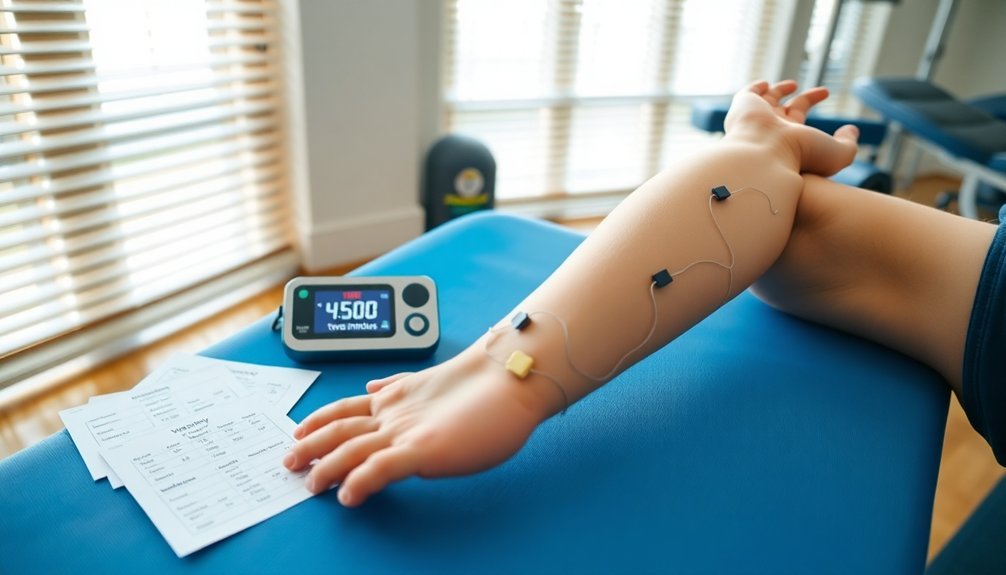
For ideal nerve recovery outcomes, treatment frequency typically involves daily exercise therapy sessions performed once or twice per day, combined with low-frequency pulse electrical stimulation (LFS).
You'll need to undergo LFS sessions with 2-10 Hz biphasic current, implementing 15-second treatments with 3-second rise times and 30-second rest periods. Each session should include 4 repetitions on your affected limb over a 2-month intervention period.
During your treatment, you'll need to balance immobilization with movement. While some immobilization helps protect nerve repair sites, early postoperative range of motion is vital to minimize scarring and encourage neural mobility.
Your therapy should incorporate these essential complementary treatments:
- Neurodynamic exercises combined with activity modification
- Pain neuroscience education throughout your recovery process
- Desensitization techniques to reduce pain thresholds
- Physical Agent Modalities like superficial heat for circulation
The combination of exercise therapy and LFS offers superior results, with success rates reaching 89.09% compared to 69.09% with exercise alone. You'll find this treatment approach particularly effective for enhancing both muscle strength and nerve function recovery, with minimal risk of adverse effects.
Healing Progression Markers
Successful nerve recovery relies heavily on measurable progression markers that indicate healing status. You'll find key indicators through nerve conduction studies and EMG findings, which show reduced conduction early on and changes in muscle recruitment patterns.
As healing progresses, you'll notice spontaneous potentials appearing weeks after injury, followed by the development of polyphasic MUAPs during reinnervation.
Your healthcare provider will track healing through imaging techniques, particularly MRI and ultrasound. T2-weighted MRI images can reveal nerve edema and muscle atrophy, while high-resolution imaging helps detect subtle changes in nerve structure.
You'll need regular electrodiagnostic assessments to monitor regeneration progress, which typically occurs at about 1 mm per day or 1 inch per month.
Keep in mind that timing is vital – early surgical intervention offers the best outcomes, as delayed treatment beyond 18 months can limit recovery.
During healing, you'll undergo physical therapy to maintain joint mobility and function. Your recovery success depends on various factors, including the type of injury, graft length if needed, and the presence of growth factors supporting regeneration.
Long Term Therapy Planning
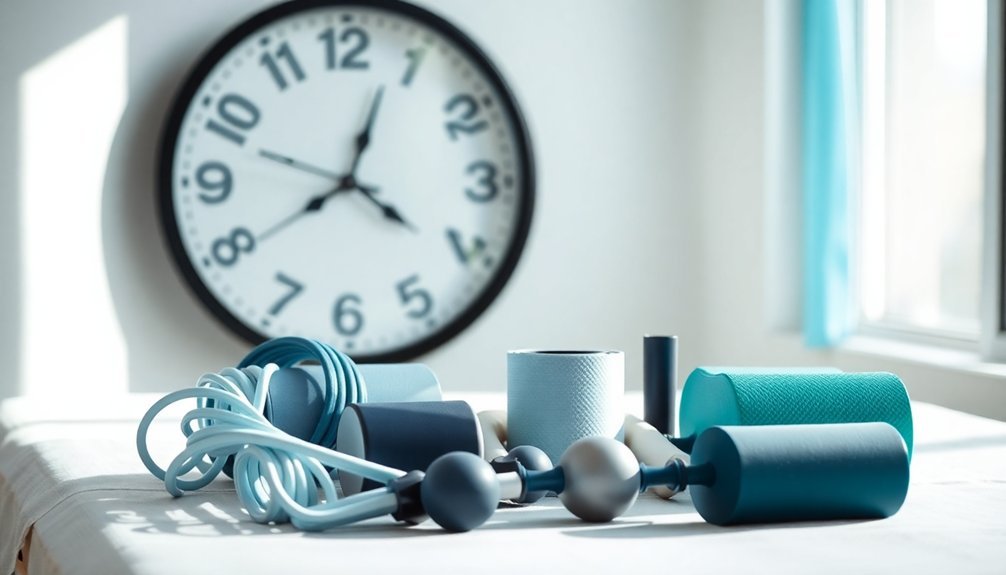
Planning long-term nerve recovery therapy requires a thorough understanding that full rehabilitation can extend from several months to multiple years. You'll need to commit to regular checkups to monitor your progress and adjust your treatment plan accordingly.
Physical therapy will be a vital component, incorporating specific movements and exercises to keep your affected muscles and joints active.
Your therapy plan may include electrical stimulation treatments to prevent muscle degeneration while waiting for nerve recovery. Once there's evidence of sensory end-organ reinnervation, you'll begin sensory reeducation programs that utilize techniques like mirror imagery and audio-tactile training.
Key elements of your long-term therapy plan will include:
- Regular physical therapy sessions with targeted exercises
- Consistent progress monitoring through checkups
- Electrical stimulation treatments when appropriate
- Sensory reeducation exercises as recovery progresses
You should understand that factors like your age, smoking status, and the timing of your initial repair can substantially impact your recovery timeline.
If you're dealing with chronic nerve pain, you'll likely need ongoing therapy combining multiple treatment approaches, including exercise, medication, and pain management techniques.
Light Intensity Time Requirements
Your early range for light therapy sessions should start at 1-15 minutes to establish baseline tolerance and prevent overstimulation of nerve tissues.
You'll need to work up to daily sessions lasting 30-60 minutes, depending on your specific nerve condition and recovery goals.
As you progress through your treatment plan, you can extend your therapy duration in 5-minute increments every few sessions until you reach your target timeframe, typically within 2-3 weeks.
Early Range Performance Limits
Light therapy for nerve recovery demands specific timing and intensity requirements to achieve ideal results.
You'll need to maintain a consistent schedule of 3-5 sessions per week, with each session lasting 10-20 minutes. The therapy requires multiple months of dedication before you can expect significant improvements in nerve regeneration.
When calculating your treatment duration, you'll need to take into account the power density and desired dose. Higher intensities mean shorter application times – for example, using 5mW/cm² for 200 seconds delivers a 1J/cm² dose. Your best dose can range from 0.1J/cm² to 6J/cm², though deeper tissue damage may require doses up to 700J/cm².
For the most effective nerve recovery therapy, you'll want to focus on these key timing elements:
- Maintain 2-14 sessions weekly, depending on your treatment plan
- Use near-infrared wavelengths (770-1200 nm) for deeper nerve damage
- Allow each treatment site 10-20 minutes of exposure per session
- Schedule consistent sessions over several months for best results
Remember that early intervention typically leads to better outcomes, particularly within the first 90 days of injury.
Daily Exercise Duration Goals
While timing light therapy sessions is important, establishing proper daily exercise durations will maximize your nerve recovery progress.
You'll want to start with short, 30-minute daily sessions that combine light exercises with stretching. For best results, you can extend these sessions up to 60 minutes when incorporating activities like walking or cycling.
If you're using electrical stimulation, limit these sessions to one hour per day, and combine them with treadmill exercises for up to two hours total. You'll need to maintain consistency while avoiding overexertion.
For chronic nerve pain, start with a 20-minute stretch followed by 30 minutes of walking.
You should spread your exercises throughout the day rather than attempting lengthy sessions. When you're doing resistance training, pay attention to your body's signals and stop before fatigue sets in.
Remember to include rest periods of 48-72 hours after more demanding exercises. If you experience nerve entrapment symptoms, you'll need to adjust your rest periods based on the severity and location of the condition.
Include low-impact activities like swimming or cycling in your routine, but keep the intensity light to prevent nerve irritation.
Progressive Motion Time Frames
For ideal nerve regeneration, you'll need to follow specific progressive motion time frames that align with your body's natural healing process. Your nerves regenerate at approximately 1mm per day after end-to-end repair, with the distance to the motor point directly affecting your recovery timeline.
You'll notice early signs of target re-innervation between 8-12 weeks, progressing to independent muscle strengthening after 6-9 months from surgery.
To maximize your recovery through light therapy, maintain a consistent schedule of 3-5 sessions per week, with each session lasting 10-20 minutes. You'll benefit most from combining both red and near-infrared light, especially if you're dealing with deeper nerve damage.
Key time frames to remember during your rehabilitation:
- Initial healing phase requires rest without nerve gliding exercises
- Early re-innervation signs appear between weeks 8-12
- Strengthening phase begins at 6-9 months post-surgery
- Light therapy sessions should continue for multiple months
During rehabilitation, you'll progress through stages focusing on motor imagery, gravity-assisted exercises, and finally, independent strengthening. Your healthcare provider will guide you through each phase, adjusting the timeline based on your specific condition and progress.
Post Treatment Monitoring Periods
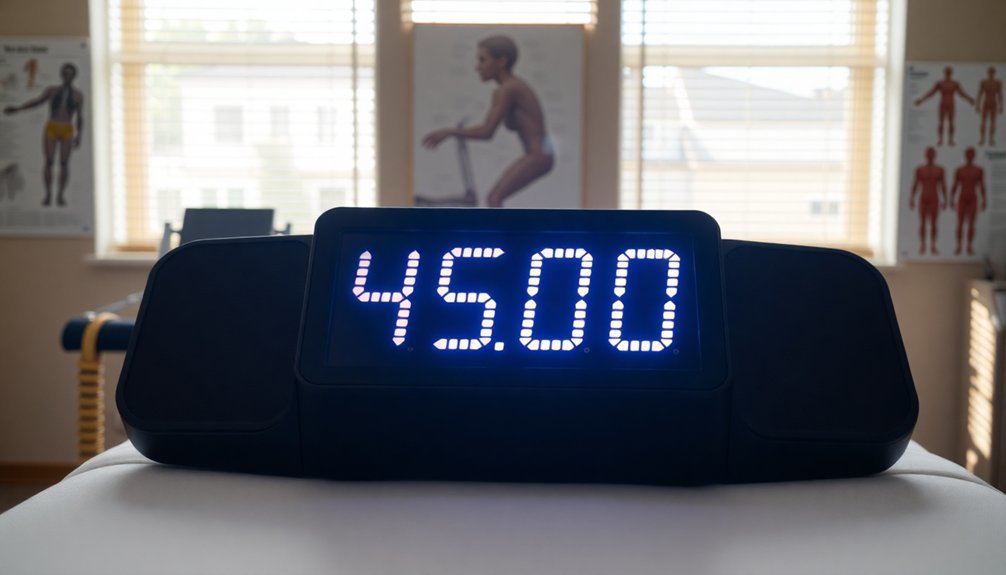
Effective monitoring during post-treatment recovery requires a structured timeline of assessments and evaluations. You'll need regular appointments during the early phases to track nerve regeneration, which typically progresses at about one inch per month.
Your healthcare provider will monitor for the return of protective sensation and decreased pain as early indicators of recovery.
After surgery, you'll begin physical therapy quickly to maintain joint mobility and prevent muscle atrophy. Your monitoring schedule will include biofeedback sessions to help you gauge muscle contractions, and you may receive low-frequency electrical stimulation to speed up nerve regeneration.
It's important to understand that your recovery could extend several months to years.
You'll need to commit to long-term monitoring, as your healthcare team will continue assessments for several years post-surgery. They'll use advanced diagnostic tools and nerve tension tests to track your progress.
During this time, you must maintain your exercise program even when results aren't immediately visible. Your therapist will adjust your exercises as function returns, focusing on sensorimotor reeducation and muscle balance restoration.
Be prepared for variability in outcomes, especially if you have chronic nerve entrapment.
Maintenance Session Scheduling
Scheduling maintenance sessions follows three key patterns based on your recovery progress and nerve condition. For chronic cases, you'll need consistent therapy extending several months, with sessions occurring 1-2 times weekly. As you improve, your therapist will gradually reduce session frequency and shift you to periodic check-ups.
Your maintenance schedule will incorporate specific therapies tailored to your nerve recovery needs, including:
- Low-impact aerobic exercises to build endurance
- Progressive resistance training for strength restoration
- Aquatic therapy for reduced spinal pressure
- Neuromuscular reeducation exercises for muscle retraining
Early motion is vital in your recovery process, though immobilization periods vary based on your nerve repair type.
You'll participate in sensory reeducation programs once there's evidence of nerve reinnervation, focusing on cortical remapping and movement patterns. Your therapist will regularly reassess your progress using outcome measures to adjust your treatment plan accordingly.
For specific treatments like nerve decompression therapy, you'll typically see best results within 4-5 sessions before moving to a general maintenance protocol.
Throughout your recovery, you'll learn proper body mechanics and home exercise techniques to prevent re-injury and maintain progress.
Frequently Asked Questions
Can I Drink Alcohol During Nerve Recovery Therapy Sessions?
You shouldn't drink alcohol during nerve recovery therapy. It'll directly damage your nerves, prevent healing, and interfere with nutrient absorption. Your recovery won't be successful if you continue consuming alcohol during treatment.
Will Nerve Therapy Affect My Ability to Drive or Operate Machinery?
Yes, nerve therapy can affect your ability to drive and operate machinery. You'll need to wait until your clinical recovery is complete, as treatment may cause reduced sensitivity, delayed responses, and movement limitations.
Should I Continue Taking Vitamins and Supplements During Nerve Recovery Treatment?
Yes, you should continue taking vitamins and supplements during treatment as they support nerve regeneration. However, always consult your healthcare provider first to verify they won't interfere with your current treatment plan.
How Does Stress or Anxiety Impact the Success of Nerve Therapy?
Your stress and anxiety can substantially reduce nerve therapy success by up to 30%. They'll impair nerve regeneration, increase inflammation, and disrupt healing. You'll recover better if you manage these emotional factors effectively.
Can Nerve Recovery Therapy Be Combined With Acupuncture or Massage Treatments?
Yes, you can combine nerve recovery therapy with acupuncture or massage treatments. You'll see 25-30% better outcomes and faster healing when using this combination approach, plus it'll help reduce your pain by 40-50%.
In Summary
You'll get the best results from nerve recovery therapy by following a consistent treatment schedule over 3-6 months. Remember to maintain your recommended 20-30 minute sessions, adjusting intensity and duration based on your progress. Don't skip your follow-up assessments, as they're essential for tracking improvement. With proper timing and dedication to your maintenance sessions, you'll maximize your chances of successful nerve regeneration.
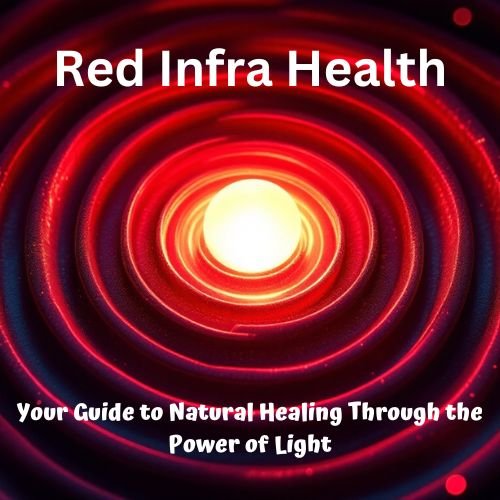


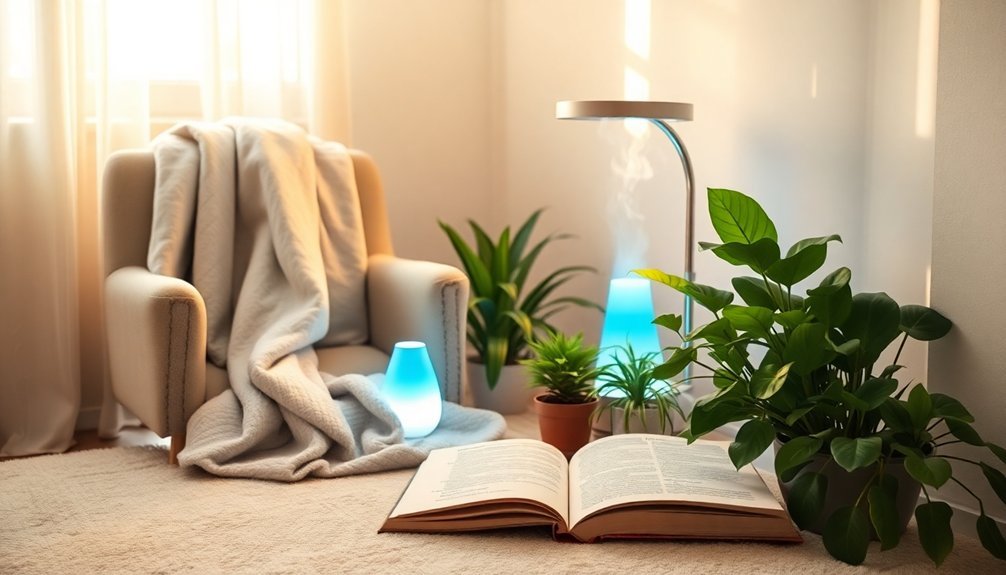
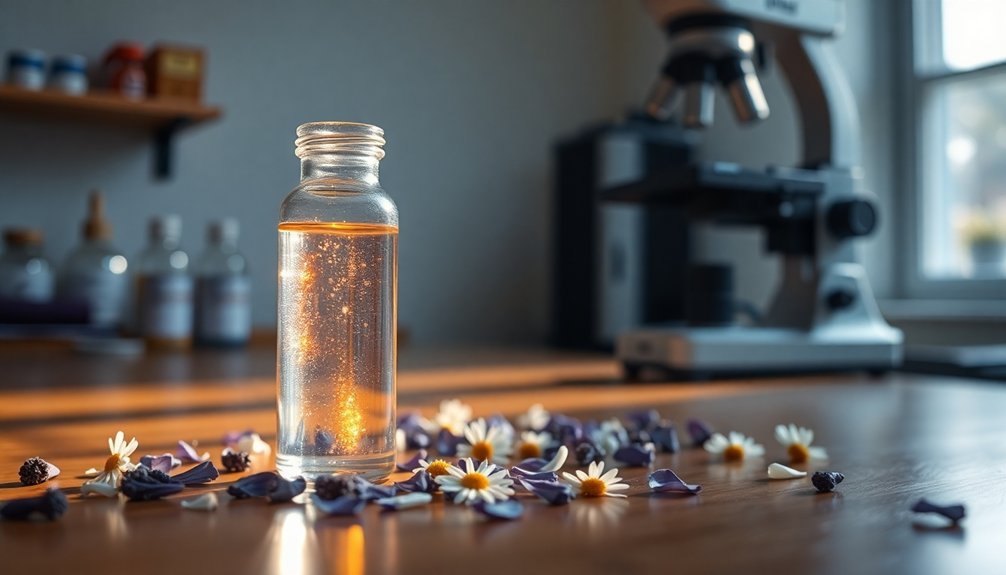
Leave a Reply